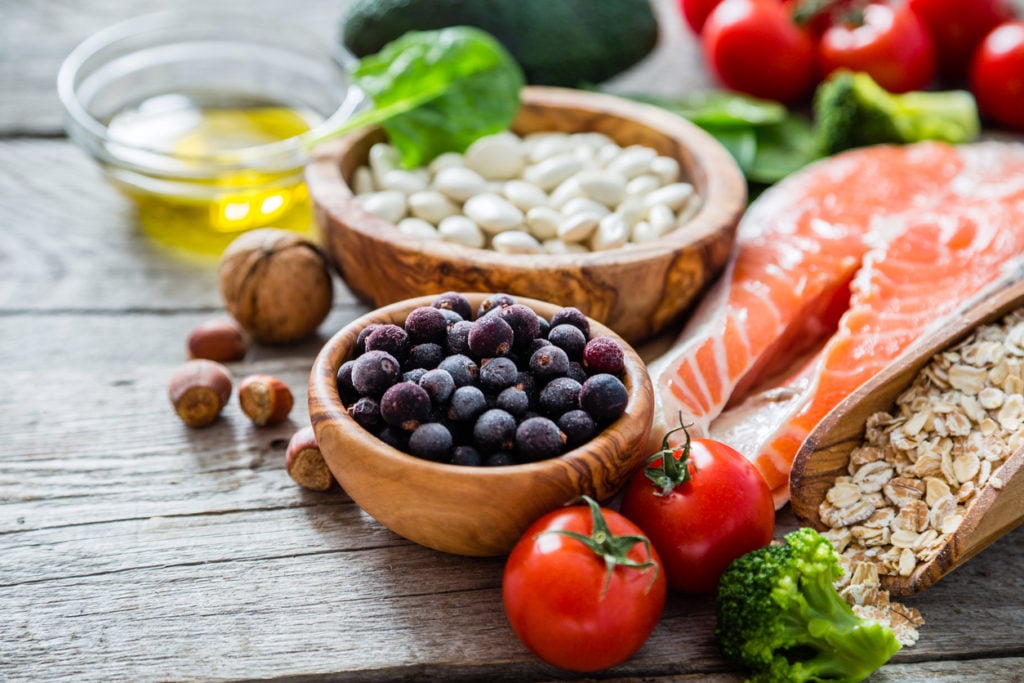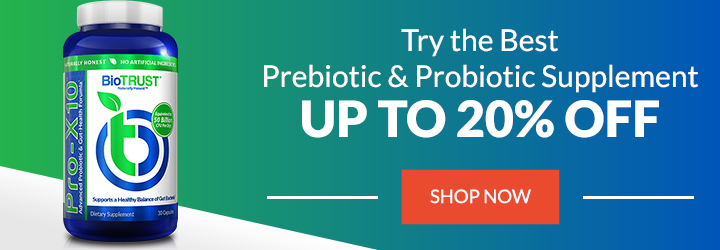What is Clean Eating: A Beginner’s Guide

Perhaps you’ve heard the phrase “clean eating” thrown around lately. Sure, it sounds healthy, but exactly what is clean eating? That’s a great question, and in this article, we’ll give you our take on the topic as well as provide you with step-by-step guidance on how to start eating clean!
What is Clean Eating
The basic premise of clean eating is to consume mostly healthy, whole, minimally-processed foods. “Clean” food doesn’t have a lot of ingredients and hasn’t been changed or processed much. In fact, most clean foods have one ingredient: the food itself. Contrast that with foods that are more heavily processed, which tend to have a laundry list of ingredients, many of which you and I can’t even pronounce.
For example, an apple is “cleaner” than applesauce, which is “cleaner” (arguably, much cleaner) than an apple pastry. Likewise, fresh chicken is “cleaner” than deli-sliced chicken, which is “cleaner” than chicken nuggets. Or, brown rice is “cleaner” than white rice, which is “cleaner” than flavored, instant rice.
Having said that, clean eating is more than what you eat; it’s also how you eat. Along those lines, clean eating is less of a “diet” and more of a way of life. Don’t let that scare you. The great thing about eating cleaner is that you can start where you are and make changes that you’re ready, willing, and able to take on.
Read on to learn how you can get on the path to eating clean.

Standard American Diet: The Rival of Eating Clean
Sometimes to learn what you should be doing, you must understand and acknowledge what you shouldn’t be doing. Enter the Standard American Diet (SAD), which is the virtual opposite of clean eating. The typical Western-style diet, which is composed of more than 70% processed foods, is tied to all sorts of health risks and problems characterized by excessive oxidative stress and unhealthy levels of inflammation—negatively affecting your heart, brain, waistline, and virtually every tissue and organ in your body while accelerating aging.
You see, the foes of eating clean are processing and refining. Generally speaking, these steps tend to take away something (e.g., fiber) from the food in its original form while frequently adding in things you don’t want or may want to limit, like artificial ingredients (e.g., sweeteners, colors, flavors, preservatives), sugar, salt, and low-quality oils (more on that below).
You can use a product’s ingredients list as your guide. Remember, a good rule of thumb is that the “cleanest” foods typically only have one ingredient, sometimes two. For instance, the only ingredient in pint of strawberries is…strawberries. The only ingredient in a salmon filet is…salmon. The only ingredient in…you see the picture. When a “food” boasts a long, complex ingredient list, this is a good indication that it’s heavily processed and further away from “clean” on the continuum.
Another clue that food isn’t clean is the amount of added salt, sugar, and fat. While consuming these from naturally-occurring sources (e.g., olives, fruit, and fatty fish, respectively) is healthy—and in the cases of sodium and certain fats, necessary—heavily processed foods rely on these added ingredients to enhance flavor and make them more palatable. There’s a reason that you can’t eat just one; it’s handiwork of the processed-food industry, which has “cracked the code” on making its food addictive.

How to Start Eating Clean: 8 Easy Steps
Chances are, you could probably guess at least a dozen different reasons why “cleaning up” your diet and eating cleaner is good for you—a healthier body weight, better sleep, more energy, better overall health and feelings of wellbeing, and the list goes on. So, the question of how to start eating clean would be a good one to discuss.
Remember, clean eating is not so much a diet as it a lifestyle approach. That’s a good thing because, for most people, the thought of completely revamping the way you eat overnight is overwhelming, and in most cases, sets you up for failure. With that in mind, check out this list of things you can do to get started on cleaning up your diet.
1. Eat more fruits and vegetables. While most people recognize that fruits and vegetables are packed with important micronutrients (e.g., vitamins, minerals) and fiber, their true super powers may lie in their phytonutrients (i.e., phytochemicals). It’s these phytonutrients, which give fruits and veggies their vibrant colors, that possess potent fat-fighting, anti-aging, and antioxidant properties. Generally speaking, the more colors you eat, the greater array of beneficial phytonutrients you nourish your body with; along those lines, it’s a good idea to consume a variety of fruits and vegetables each day. To optimize health, you may consider trying to include at least one serving of each of the primary colors each day:
- Greens: Various lettuces, spinach, kale, arugula, Brussels sprouts, broccoli, asparagus, zucchini
- Reds: Tomatoes, red bell peppers, red cabbage, watermelon, grapefruit, pomegranate, raspberries, cherries, papaya, cranberries, strawberries
- Oranges: Carrots, orange bell peppers, various squashes, pumpkin, cantaloupe, pineapple, citrus fruits, peaches, mango
- Whites: Onions, garlic, parsnips, cauliflower, yellow squash
- Purples: Eggplant, purple cabbage, beets, grapes, blueberries, blackberries, prunes
2. While we recommend eating protein-rich foods, which help keep you feeling full and satisfied and promote a healthy body composition, with each meal, we suggest investing in the highest quality that your budget allows (e.g., organic, pasture-raised, wild, sustainable, hormone- and antibiotic-free, etc.).
Looking for a More Complete Protein?
3. Drink clean water—lots of it. Let’s put it this way: The human body is made up of about 60% water (or, at least it’s intended to), and dehydration of just 0.5% can negatively affect how your brain, heart, and muscles work. While water needs vary significantly from person to person based body size, activity levels, temperature and humidity, food choices, and more, a good starting point for most is to drink about 64 ounces, or 2 liters, of water per day.
4. Overall, carbohydrate intake should match activity levels and body type (e.g., insulin sensitivity), and when you do eat carbs, we recommend choosing “smart carbs,” which are whole, minimally-processed, slow-digesting, and high in fiber, such as the following:
- Colorful, starchy vegetables (e.g., sweet potatoes, purple potatoes, winter squash)
- Colorful fruits (e.g., berries)
- Sweet/starchy fruits and vegetables (e.g., bananas, plantains, potatoes)
- Legumes (e.g., beans, lentils)
- Whole, intact grains (rather than “foods” made from refined flour), including whole or steel-cut oats; wild, brown, or red rice; quinoa, amaranth, or buckwheat groats; sprouted grains; kamut or spelt grains; maize; millet; and barley
5. Replace less healthy fats (e.g., soybean, canola, corn, cottonseed, safflower, and sunflower oils), which are typically found in processed/packaged foods, with healthier fats such as:
- Raw nuts (e.g., walnuts, almonds, cashews) and nut butters
- Raw seeds (e.g., pumpkin, chia, hemp)
- Olives and extra-virgin olive oil
- Avocados and extra-virgin avocado oil
- Other cold-pressed, extra-virgin oils (e.g., walnut, macadamia nut, hemp)
- Butter and ghee (from pasture-raised cows)
- Fresh coconut, coconut milk, and extra-virgin coconut oil
- Fatty fish and shellfish (e.g., salmon, anchovies, sardines, oysters, mussels, herring, tuna, white fish)
6. At the supermarket, concentrate your shopping on the perimeter of the store. Most of the “clean” stuff can be found here, while most of the stuff to avoid is in the inner aisles and beside the checkout.
7. Shop at your local farmer’s market. Not only will you be supporting local business, by purchasing fresh, seasonal produce, you’ll also be reducing your carbon footprint.
8. Choose organic foods when possible and when your budget allows. Speaking generally, produce grown under organic standards has been shown to provide significantly greater amounts of antioxidant phytonutrients while reducing exposure to potentially harmful pesticide residues, heavy metals, and antibiotic-resistant bacteria. Meanwhile, compared to conventional meat and dairy, organic varieties have been shown to have higher levels of healthy fats (e.g., omega-3 fats, conjugated linoleic acid).
Clean Up Your Act
Clean eating means different things to different people, but if you begin to put the above steps into action and eat mostly healthy, whole, minimally-processed foods in the appropriate amounts for your activity level, then you should be well on your way to a healthier body weight and improved health.







